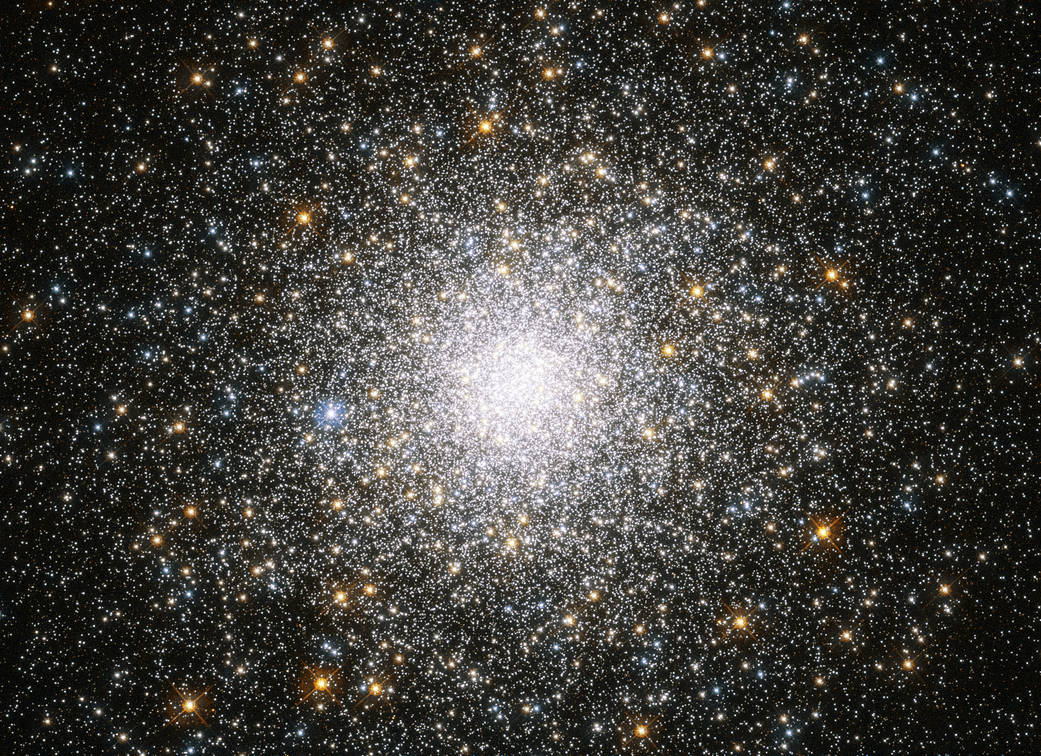这个闪耀的恒星群是Messier 75。它是一个球状星团:一个由引力结合在一起的恒星的球形集合。像这样的集群绕着星系运行,通常位于它们外围和不太拥挤的区域,聚集在星系郊区形成密集的社区。
Messier 75位于我们的银河系人马座(射手座),距离地球约67,000光年。该星系团的大多数恒星(约40万颗)位于其核心;它是迄今为止发现的人口密度最大的星团之一,亮度是太阳的18万倍。难怪它拍得这么好!
1780年,皮埃尔·梅凯因发现了Messier 75,同年晚些时候,查尔斯·梅西耶也发现了Messier 75,并将其列入了他的目录。这张Messier 75的照片是由美国宇航局/欧洲航天局哈勃太空望远镜的高级巡天照相机拍摄的。
Messier 75出现在哈勃的梅西耶目录中,其中包括一些可以从地球北半球观测到的最迷人的物体。请参阅NASA处理的图像和其他Messier对象:https://www.nasa.gov/content/goddard/hubble-s-messier-catalog。
This sparkling burst of stars is Messier 75. It is a globular cluster: a spherical collection of stars bound together by gravity. Clusters like this orbit around galaxies and typically reside in their outer and less-crowded areas, gathering to form dense communities in the galactic suburbs.
Messier 75 lies in our Milky Way galaxy in the constellation of Sagittarius (the Archer), around 67,000 light-years away from Earth. The majority of the cluster’s stars, about 400,000 in total, are found in its core; it is one of the most densely populated clusters ever found, with a phenomenal luminosity of some 180,000 times that of the Sun. No wonder it photographs so well!
Discovered in 1780 by Pierre Méchain, Messier 75 was also observed by Charles Messier and added to his catalog later that year. This image of Messier 75 was captured by the NASA/ESA Hubble Space Telescope’s Advanced Camera for Surveys.
Messier 75 is featured in Hubble’s Messier catalog, which includes some of the most fascinating objects that can be observed from Earth’s Northern Hemisphere. See the NASA-processed image and other Messier objects at: https://www.nasa.gov/content/goddard/hubble-s-messier-catalog.
Text credit: ESA (European Space Agency)
Image credit: ESA/Hubble & NASA, F. Ferraro et al.







